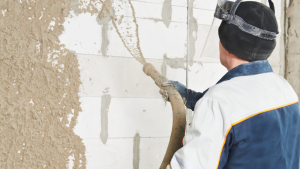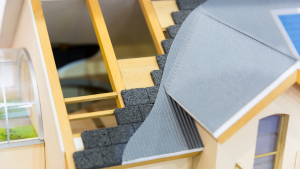When should stucco cracks be repaired? As a homeowner, you may have noticed that your stucco walls are starting to show signs of cracking. When is it necessary to fix something?
Stucco is prone to developing cracks rather often. Those who have stucco walls will attest to this. Gaps are almost inevitable because of the material. If you have stucco in your home, you need to educate yourself on how cracks form and how often you should be prepared to fix them.
Here is a guide on what causes stucco cracks, how to fix them, and when to do so.
Types of Stucco Cracks
Stucco walls may develop a number of different kinds of fissures. They develop for a variety of reasons, and each of them will influence how you fix stucco cracks.
To determine the types of cracks in your stucco, look for the following signs.
Stucco walls may develop several different kinds of fissures. They create for a variety of reasons, and each of them will influence how you fix stucco cracks.
- Hairline Cracks: These cracks often measure little more than 1/16 of an inch in width. These are the most typical cracks you’ll encounter. They develop for a variety of causes. Since the plaster settles and moves while the house is being built, they are most common in new homes. Building work, turning foundations, or letting the wood dry out can sometimes cause hairline cracks.
- Foam Trim Cracks: There are times when the foam trim used on stucco also develops cracks. If the foam trim is cracked, it was not placed with fiberglass mesh tape. Over time, expansion and contraction will cause cracking.
- Spider Cracking: The name comes from how these crevices in your stucco resemble spider webs. If you notice this in your stucco, the base coat needs more time to cure fully. This could have happened because the mixture had too much water, dried too quickly, or the temperature could have been better on the day it was applied.
- Pattern Cracking: Your walls might develop pattern-following cracks. On your stucco, it often appears as a grid of horizontal and vertical lines. The lath installation had issues, which is why there is cracking. It probably needs to be correctly fastened on, which will eventually cause further cracks.
- Diagonal Cracking: These fractures often appear around doors and windows and, as their name suggests, are diagonal in appearance. These occur due to seismic shifts in the foundation, which causes them to move. You should take care of these cracks first if they are bigger than others on your stucco.
When should your stucco be repaired if you notice cracks?
The answer is “as soon as possible.”
It will help if you fix any cracks right away, no matter how small they may be. Even though it’s still tiny, it could eventually grow and lead to more significant problems. You can stop that crack in its tracks if you fill it in right away.
Additionally, you must make sure that your house is secure. If the stucco has cracks, water may seep in and lead to issues with mold and moisture. The sooner you fix that crack, the better, as these are challenging if you don’t find them in time.
How to Repair Cracks
Your stucco’s repair method will vary depending on how the crack developed.
- If the crack is only a hairline, it is safe to fill it in to stop it from spreading.
- A hairline crack can usually be repaired without too much difficulty.
Many items will help you fill it in that you can purchase at your neighborhood hardware store. Ask the staff there if you need clarification on which one to buy.
DIY
The most popular items are acrylic caulks, which you may use to close gaps.
- After enlarging the crack to about a quarter-inch in width, use a wire brush to remove debris.
- After that, use a caulk gun and the mixture to fill the crack.
- After giving the caulk 24 hours to dry, paint over it with water-based paint.
When to Call the Pros
The lath beneath the stucco needs to be repaired or replaced when there are pattern cracks. This implies that the stucco will need to be removed to gain access. The lath must be properly secured before new stucco can be applied on top of it.
Large or diagonal cracks suggest that there may be a problem with your home’s foundation. In these situations, you must first hire experts to handle the foundation, failing which you will eventually notice more worsening cracks. Invite a specialist to examine your foundation and determine how it can be fixed.
How to Prevent Future Cracking of Stucco
You want to ensure you can stop any further cracks from appearing after you have repaired any existing ones in your stucco.
- How can you ensure that you won’t need to perform any additional stucco repairs in the future?
- Applying fresh stucco will yield the best results because everything depends on how it is done.
To prevent water damage and the ensuing cracks, ensure a suitable water-resistant barrier is utilized in the stucco.
Conclusion
Any severe issues may be avoided if you use caution and closely monitor your stucco. If you fix little cracks as soon as you see them, they won’t spread and give you further issues. It’s usually preferable to fix stucco cracks as soon as you see them.




